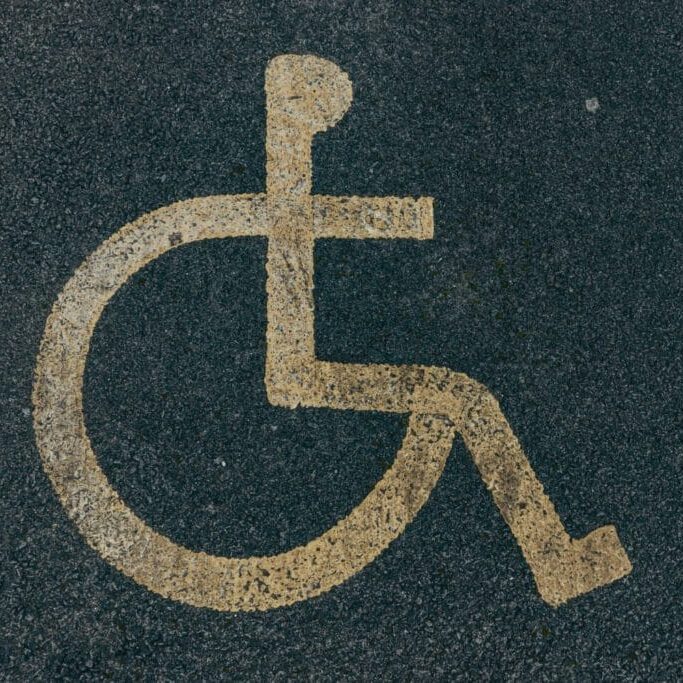
Disability benefits are not beneficial for disabled people
There is a long way to go before Canada is truly inclusive
Many people with disabilities experience barriers to societal participation. These include high unemployment rates, lack of housing, inaccessible environments and limited health care.
As disability rates continue to rise in Canada, this is becoming a significant social issue that impacts many Canadians. The federal government has made a commitment to a more accessible Canada by signing the United Nations Convention of the Rights of Persons with Disabilities (UNCRPD) and by creating accessibility legislation. Although this is a good start, more needs to be done to ensure that people experiencing disability can participate equally in society.
Disability tax credit
The financial assistance for people with disabilities in Canada is neither accessible nor enough to sustain daily living. The disability tax credit (DTC), for example, reduces the income tax a person owes but does not provide direct funding. Moreover, the DTC requires more than a diagnosis to be eligible for this benefit. Applicants must prove the severity of their impairment with specific criteria that uses language such as “marked restriction,” “inordinate amount of time,” and “prolonged.”
The dense language makes it hard to interpret, and the severe word choice may deter those who need the support, believing their problems won’t be considered “bad enough.” The DTC application must also include certification from a medical practitioner. This is difficult to do at a time when 4.7 million Canadians do not have a regular health care provider.
Canadian Pension Plan
Alternatively, the Canadian Pension Plan (CPP) offers a disability benefit which provides monthly payments to those who qualify. If you are under 65, have contributed enough to CPP, are unable to work and have a disability that is either terminal or lasting for an indefinite amount of time, you might be able receive $1,616.52 per month. This is not sufficient to cover the cost of basics, like rent, let alone the cost of medication, assistive devices or therapy that may help to increase quality of life for people with disabilities.
Each province and territory has their own income assistance program. This social welfare program is meant to be temporary while recipients continue to look for employment. Disabled people experience high rates of unemployment, so many rely on social welfare as their only source of income.
But how is the CPP’s $1616.52 equitable, especially in comparison to the Canadian Emergency Response Benefit (CERB), which provides $500 a week? This was the amount that the federal government determined adequate for those experiencing a lapse of employment during the COVID-19 pandemic. But those who were already unemployed due to disability were not eligible for CERB. This discrepancy in funding keeps disabled people in poverty while potentially exacerbating disability and creating disability for people who are low income.
A new plan
This June, the federal government announced a new benefit for people with disabilities as part of Canada’s Disability Inclusion Action Plan (DIAP). A key objective for the DIAP was to improve the social and economic inclusion of persons with disabilities. Consulting with members of the disabled community, it was recommended that the benefit not be tied to the DTC, not include claw backs in other funding sources, should be automatic for people who already receive government support and should help raise people above the poverty line.
However after a lengthy consultation process, none of these recommendations were implemented. The federal government’s benefit requires a person to receive the DTC, may include funding claw backs, requires a separate application process and amounts to a measly $200 a month. What is the point of consulting members of the community if their voices are not listened to? This decision leaves disabled people feeling unheard and ignored. We cannot improve the social and economic inclusion of persons with disabilities if the benefits still fall short of a rental payment.
We need to do more
Advocacy organizations, such as Inclusion Canada and Disability Without Poverty, are asking Canadians to contact their members of parliament and push for increased payments and simplified processes. There are letter templates available as well as a social media hashtag to #BuildOnTheBudget. If Canada wants to be inclusive, then accessibility must be considered.
Article 9 of the UNCRPD states accessibility is needed to enable persons with disabilities to live independently and participate fully in all aspects of life. At the very least, Canada should provide enough funding to live, instead of these supposed benefits that keep disabled people in the margins of society. If disabled people are to benefit, then we must make social assistance beneficial.






